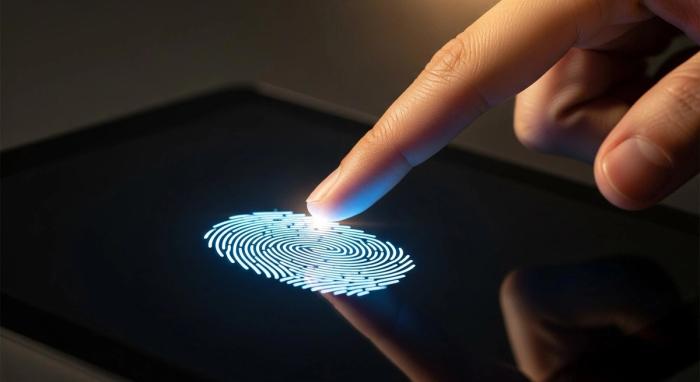If you’ve filed for a green card, work permit, change of status, or naturalization, there’s a strong chance you’ll be scheduled for a biometrics appointment. Think of it as the moment USCIS connects you to your paperwork: they take your photo, scan your fingerprints, and capture your signature to verify identity and run background checks that move your case forward. It’s short—often under 30 minutes—and happens at a local Application Support Center (ASC). Your notice (Form I-797C) will show the date, time, and exact location.
In this guide, you’ll learn what the appointment is, how to read the codes on your notice, what to bring, rescheduling rules, and what happens to your case afterward. If you’re also prepping forms—say I-539 to change or extend status or an I-765 for an EAD—bookmark our step-by-steps so your forms, fees, and biometrics appointment stay in sync: check out Fill Out Form I-539 in 2025: Your Complete Guide and H-4 EAD application mistakes for practical tips that keep timelines smooth.
What is a biometrics appointment—and who needs one?
Plain English version: your biometrics appointment is how USCIS confirms your identity and runs required background and security checks so an officer can make decisions on your case. Most applicants for I-485 (adjustment), I-765 (EAD), N-400 (naturalization), and I-539 (change/extend status) will be scheduled at a local ASC. It’s not the same place as an interview, and it’s not a test; it’s administrative but essential.
What actually gets captured: fingerprints, a digital photo, and an electronic signature. You’ll usually be asked to bring your appointment notice (I-797C) and valid, unexpired photo ID (passport, state ID, driver’s license, green card). That’s right in USCIS’s policy materials.
Will everyone be called in? Sometimes USCIS reuses existing biometrics if they already have what they need—if that’s your situation, they’ll tell you. Otherwise, expect an appointment at an ASC.
A quick money note: as of April 1, 2024, USCIS removed the separate $85 biometrics fee for most filings (the cost is baked into filing fees now), though some exceptions remain, such as TPS and certain EOIR-related forms with their own biometrics charges.
Helpful reads while you wait: If your biometrics is tied to an I-539, open Form I-539 for H-4 Visa: What You Really Need to Know in 2025. If you’re on an H-4, H-4 Visa Explained is a solid overview, and if you’re filing for a spouse or child on J-2, How to Apply for J-2 Visa EAD walks through that path.
How to read your notice (Code 1/2/3) and prepare the right way
Your ASC appointment notice includes a small “code” that tells you what will be collected:
- Code 1: 10 fingerprints only
- Code 2: index fingerprints, photo, and signature
- Code 3: 10 fingerprints, photo, and signature
These codes appear directly on the notice and determine what happens at the desk.
What to bring to your appointment
Your I-797C appointment notice and a valid photo ID. This comes straight from the USCIS Policy Manual. If English is tough, you may bring an interpreter or your accredited representative/attorney as allowed by local procedures.
Smart prep for better fingerprints:
- The night before, lightly hydrate your hands; on the day of, skip heavy lotion and wash/dry your hands right before scanning (too dry or too oily can trigger re-scans).
- If you have worn fingerprints (e.g., from manual labor or chemicals), let the technician know—they have techniques and retries to improve capture quality.
- Bringing a child? ASCs adjust capture methods for small hands; bring their ID if available and the child’s notice.
- Confirm any building rules on phones or bags; many ASCs have security screening. (Consumer legal guides note that some buildings restrict phone use—plan accordingly.)
Little details that save time: Have your A-Number handy; if you’re not sure where to find it, we explain it with visuals in What is Alien Registration (A-Number)?. If your biometrics supports an I-765 EAD, skim our H-4 EAD application mistakes to avoid issues that delay your work card.
What actually happens at the ASC (step-by-step)
Check-in
You’ll show your notice and ID, pass a quick security screen, and wait to be called. Staff may confirm basics such as name, date of birth, and A-Number (if you have one). It’s not an interview—no need to rehearse answers; this is about identity capture.

Biometrics
Photo: A simple head-and-shoulders shot—no hats, big hair accessories, or tinted glasses.
Fingerprints: Depending on your notice code, you’ll place fingers on a digital scanner (sometimes rolling each finger; sometimes flats).
Signature: You’ll sign on a tablet to certify your application statements. USCIS’s Preparing for Your Biometrics and ASC pages outline the basics (photo, fingerprints, signature).
Additional Info
How long it takes: Many people finish in about 20 minutes, though busy centers and finicky scanners can make it longer. That’s normal, and re-scans are common. Some nonprofit guides even note the notice is sometimes stamped after capture—handy as proof you completed your biometrics appointment.
Accessibility & mobile biometrics: If you cannot travel due to a medical condition, USCIS policy allows mobile biometrics in certain cases or reasonable accommodations if requested in advance. If this applies to you, contact USCIS before the appointment to set it up.
Tip for EAD filers: While you’re waiting on background checks, you can monitor your EAD case using USCIS tools—see our walkthrough in 5 Ways to Check EAD Application Status.
Can you reschedule or do a walk-in? (good-cause policy, best practices)
Rescheduling exists—and it’s easier now. Since July 2023, USCIS has online rescheduling for most biometrics appointments via your USCIS account, and they published guidance explaining how officers evaluate “good cause.” Reasons like illness, family emergencies, transportation problems, and unavoidable travel can qualify. Always request rescheduling before your appointment time.
What if you miss it? Contact USCIS promptly through your online account or the Contact Center and explain. Consumer legal resources warn that skipping the appointment with no action can lead to delays and even denial for abandonment, so act fast.
Walk-ins? There’s no guaranteed “walk-in” right. Some ASCs may fit you in the same day if they have capacity, but it’s discretionary. The safer approach is to use the online rescheduling tool or call. (Earlier USCIS guidance emphasized phone rescheduling; today the online option is usually smoother.)
Family groups: If your family has different dates, you can ask staff—politely—whether they can see you together. Sometimes they can; sometimes they can’t. It’s a courtesy, not a rule.
Heads-up for H-4 and J-2 families: If your biometrics appointment timing clashes with school, work, or a trip, consider rescheduling early and make sure your paperwork is tidy to avoid extra appointments. For H-4s, see H-4 Visa Explained and H-4 EAD application mistakes. For J-2s, How to Apply for J-2 Visa EAD covers typical supporting documents so you’re not ping-ponging back to an ASC for re-capture.
After the appointment: what biometrics unlock in your case
What happens behind the scenes: Your fingerprints and photo run through FBI and other databases for identity and background checks. USCIS policy materials outline these checks for benefits like naturalization and adjustment. Your case generally can’t be approved until the checks clear. If the results expire (often after many months), USCIS may schedule a second biometrics capture.
When will your status change online? Many people see “Biometrics Completed” or similar in their USCIS account within days or weeks, but that timing varies by workload and location. It’s not a problem if it takes longer; what matters is that the system has what it needs to keep processing. (Consumer sites discuss timelines, but treat them as estimates.)
Fees today: Since April 1, 2024, there’s no separate biometrics fee for most form types. Exceptions remain—for example, USCIS still lists a separate biometrics fee for some EOIR-related filings, and TPS has its own fee structure changes under separate authority. Always check your form’s page and current fee table before filing.
Where Immiva fits in: If your biometrics appointment is part of an I-539 package or a combo with I-765, line up your evidence and edition dates so you don’t hit avoidable snags. Start with Fill Out Form I-539 in 2025: Your Complete Guide and Form I-539 for H-4 Visa: What You Really Need to Know in 2025. If your end goal is work authorization, H-4 EAD application mistakes can save weeks of back-and-forth.
Quick Takeaways
- A biometrics appointment is required for many applications and isn’t an interview; it’s identity capture for background checks.
- Bring your I-797C notice and a valid photo ID; the Policy Manual spells this out.
- The code on your notice matters: Code 1/2/3 tells the staff what to collect.
- You can reschedule online for good cause—don’t just skip it.
- Since April 1, 2024, most forms no longer have a separate biometrics fee; a few exceptions remain.
Conclusion
A biometrics appointment is a small stop with big impact: once USCIS has your fingerprints, photo, and signature, the background checks that unlock decisions on your case can move forward. Show up with your I-797C and photo ID, arrive a bit early, and don’t stress if the technician needs a few re-scans—it’s routine. If life happens, reschedule online with a short note explaining your good cause instead of skipping the slot. For most filings, there’s no separate biometrics fee anymore, but the appointment remains just as important to your timeline.
Need help making sure your forms line up cleanly with your biometrics appointment? Start with Fill Out Form I-539 in 2025: Your Complete Guide, then see Form I-539 for H-4 Visa: What You Really Need to Know in 2025 and H-4 Visa Explained. If your end goal is a work card, double-check the fine print in H-4 EAD application mistakes or, for exchange visitors, How to Apply for J-2 Visa EAD.
